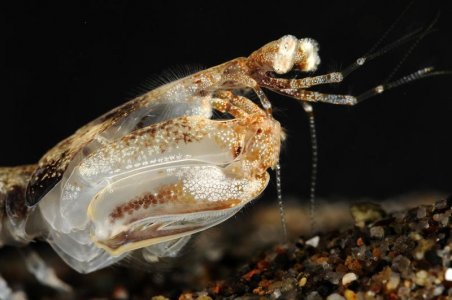All stomatopods that I have seen can strike with either a closed or open dactyl. "Spearers" typically strike soft bodied prey such as fish and shrimp with an open dactyl impaling the prey on the dactyl spines, but when fighting defensively they will often strike with a closed dactyl. I have always assumed that this was to avoid getting the raptorial appendages stuck in a powerful opponent or predator which could cause them to be torn off. Some spearers such as Squilla empusa will also break up thin shelled bivalves striking the shell with the heel of the closed dactyl.
"Smashers" break apart hard shelled prey, modify cavities, and fight armored opponents striking with a closed dactyl. However, they will stab soft bodied predators and competitors (octopus, fish, humans) with an open dactyl.
The hatchet morphology is found in a few squillids and lysiosquillids. These animals burrow in soft sediments and feed on clams and crustaceans. The "bladed" heel of the dactyl seems well suited to chopping up cuticle and thin shell while maintaining a functional spearing appendage. I have not seen them fight intraspecifically, but my guess is that would they strike with a closed dactyl.
The relatively undifferentiated "spike" dactyl of Hemisquillids and Pseudosculdids would seem to be a fourth functional type of raptorial appendage. Good for smashing, the robust dactyl can also be driven home into opponents without becoming stuck or broken.
Roy


